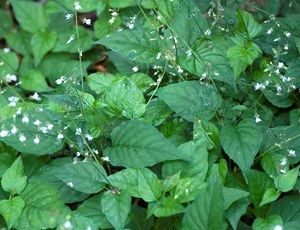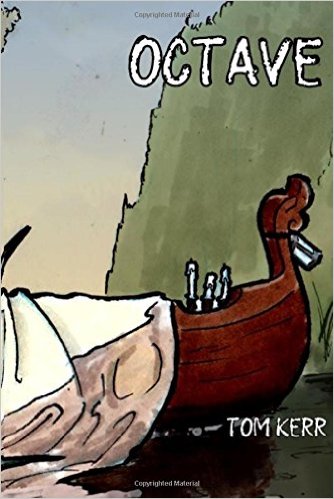IT’S NOT LIFE OR DEATH, IT’S JUST PRAYERS, POTIONS, PASSIONS & PIGS
At this time of the year my mind often drifts back to warm summer days and to walks in some of my favourite places in Edinburgh. One of my favourite walks is along the banks of the Water of Leith in a wooded area called the Colinton and Craiglockhart Dells. One flowering plant which grows there is Enchanters Nightshade Circaea lutetiana. This short plant with small white flowers grows well in shady areas like the shaded and wooded Dells.

So what have flowers and plants got to do with Hamlet? Shakespeare certainly had a good working knowledge of plants and there are many references to plants and flowers in his works. It is hard to think of Ophelia without thinking of the flowers she gives out to the Claudius, Gertrude and Laertes in Act 4 Scene 4, or her floating down the river before her death surrounded by flowers on the banks and garlands that she had picked, floating by her side in the current.
This series of 4 blogs has looked at Hamlet’s famous soliloquys and the characters from Greek mythology that he speaks of. So for this final blog I have to mention the most famous soliloquy in English literature. It occurs in Act 3 Scene 1 and begins;
‘To be, or not to be, that is the question:’
This famous speech is obviously about life, death and suicide. Although Hamlet is addressing his thoughts to us, the audience, there are other listeners too. Claudius and Polonius are listening in, surveillance is a common theme running through the plot. Also present is Ophelia supposedly reading a book and it is to Ophelia he turns to at the end of this soliloquy and says;
‘Soft you now,
The fair Ophelia.- Nymph, in thy orisons
Be all my sins remembered.’
Hamlet is asking her to pray for him. But who or what were the nymphs?
The nymphs in Greek mythology were the nature goddess’s, they personified locations or landforms, or animals and usually took the form of young maidens and there were many hundreds, maybe thousands of them. The nymphs can be grouped either according to landform feature or animal they personify or sometimes by who their parents were, for example there are river, stream and lake nymphs, forest nymphs and nymphs who personified individual species of tree. There were sea nymphs (the Oceanids), mountain and valley nymphs and bee nymphs. Other groups of nymphs include the Heliades who were the daughters of Helios the sun god and the Pleiades the daughters of the Titan god, Atlas.
Some of the nymphs play little part in Greek mythology and are rarely written about, however others play a much larger role. Some of the more famous nymphs or often referred to as goddess’s in the myths rather than as nymphs. One such nymph is Circe which brings me back to the plant, Enchanters Nightshade Circaea lutetiana which I mentioned at the beginning of this blog. Circe was a Heliades nymph or goddess, the daughter of Helios and Perse an Oceanid. Circe was known as a witch or enchantress who had a vast knowledge of potions and herbs and could use these to turn her enemies into animals. She lived in a grand house on the island of Aeaea which was patrolled by people she had turned into wolves and lions to guard her.

The story of Odysseus and his crews encounter with Circe is told in Book 10 of Homer’s The Odyssey. Odysseus and his crew arrived on Aeaea on their journey from the Trojan war to Ithaca, they were lost, hungry and tired and needed supplies. Odysseus on climbing a crag had seen a wisp of smoke coming from some dense forest. He sent a party of men led by Eurylochus to locate the source of the smoke. The party found a house, it was guarded by the wolves and lions, but after calling to the occupant, Circe came out and invited them inside. Eurylochus sensing a trap stayed outside. He was correct, as Circe gave the other men food and drink laced with a potion which turned the men into pigs.
Eurylochus returned to Odysseus to tell him the news. As you can imagine Odysseus was not best pleased, so arming himself, he set off back to Circe’s house. On the way he met Hermes, the messenger god, who gave him an antidote to Circe’s potions. When Odysseus arrived at Circe’s house, she took him in and gave him a poisoned drink, but Odysseus was unaffected as he had taken the antidote. He then threatened to kill her, but she promised to reverse the spell on his men and then they went to bed!
Circe later reversed the spell on his men and the whole crew remained with her feasting and drinking for a year. So they were not in too much of a hurry to get home. However Odysseus soon became restless to get back to Ithaca, so Circe set up a meeting with the soul of the Theban prophet Teiresis in Hades and summoned Boreas, the north wind, to guide him and his ship to the entrance of Hades. Teiresis would be able to tell Odysseus what lay ahead for him and how to get home. Incidentally, Odysseus also spent seven years trapped on another island, Ogygia, with another nymph on his return from the Trojan war. She was the Oceanid nymph, Calypso, but that’s a story for another day.
The genus Circaea is named after Circe and it is said that Enchanters Nightshade was in the potion that she gave to Odysseus’s men. It is supposed to have the magical trait of causing shapeshifting and transformation. The plant is non-toxic but full of tannins, inedible and does not seem to have had any medicinal uses, except for witches.
Of course, I am not saying that Hamlet was thinking of Circe or Calypso or any other specific nymph in particular when speaking to Ophelia, he was using it as a more general term for a beautiful young maiden, often liking to sing and dance.
The nymphs occur in many of the great Greek myths why not check them out yourself?


Comments are closed.